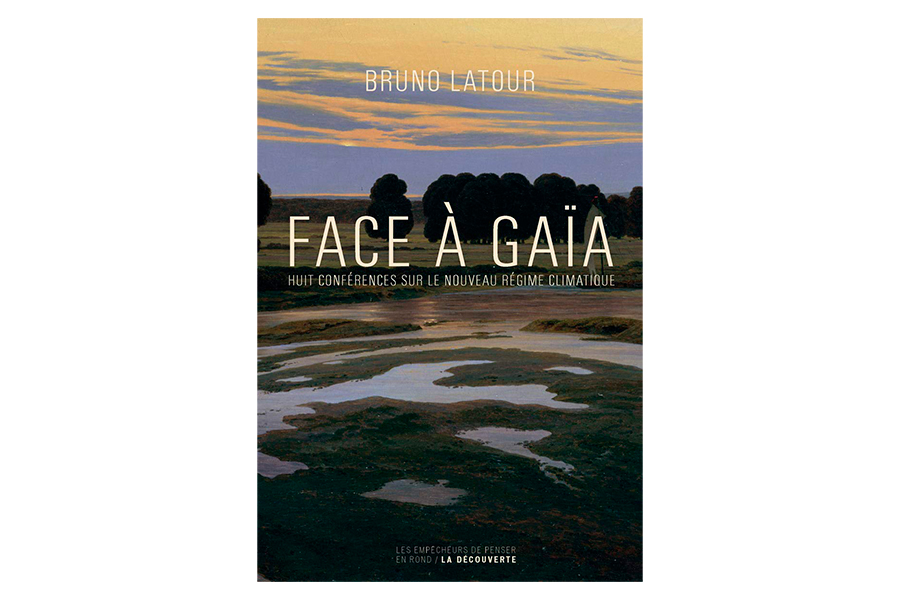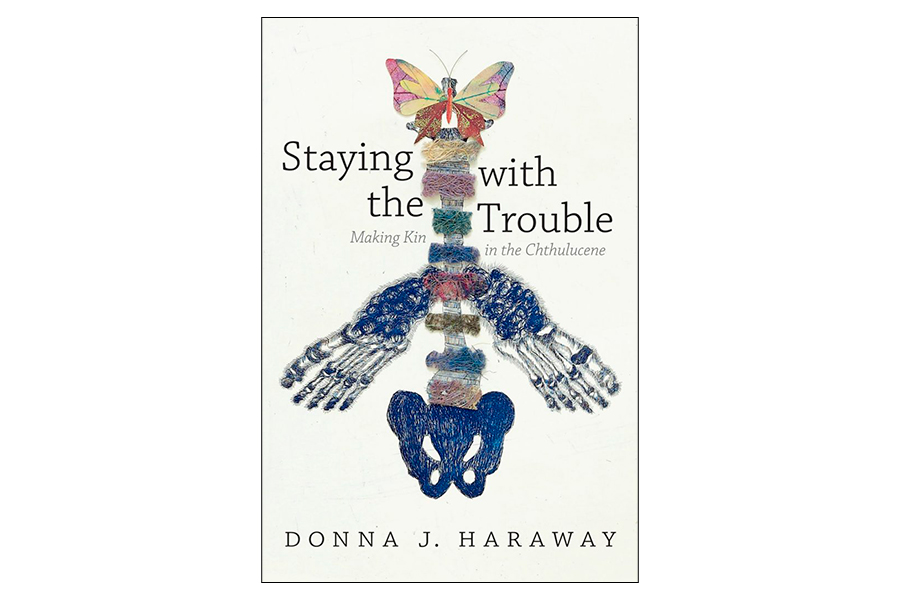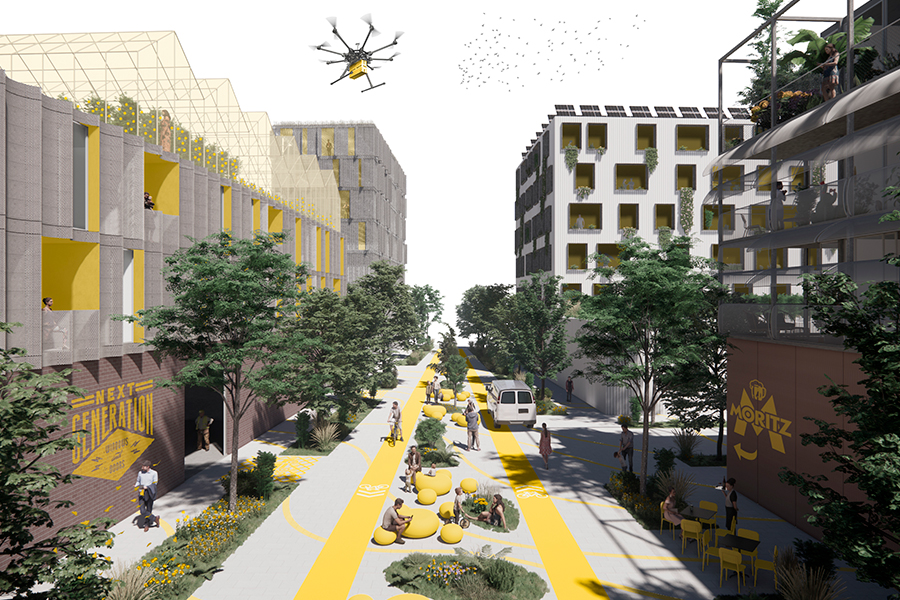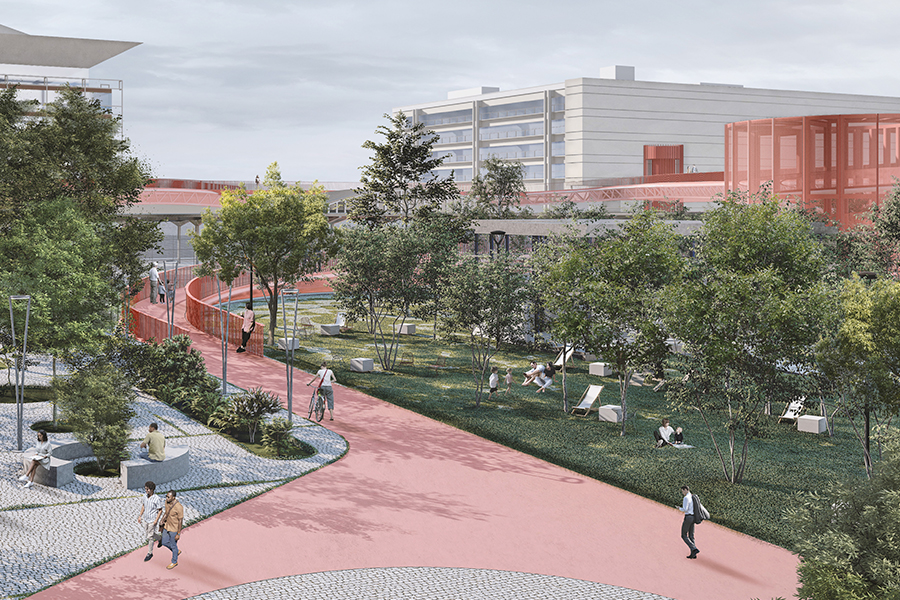Into the Wilderness
Wien (AT) - Mentionné

DONNÉES DE L’ÉQUIPE
Associés: Carlos Rebolo Maderuelo (ES), Alejandro Caraballo Llorente (ES), José [Pepe] Lacruz Vela (ES) – architectes
CRAC, Madrid (ES) www.tallercrac.com / pepelacruzarch, Onda (ES) www.pepelacruzarch.com
TEAM PORTRAIT
VIDEO (by the team)
INTERVIEW
Click on the images to enlarge
1. How do you define the main issue of your project in relation with the theme “Living Cities Imagining architecture taking care of the milieus”? And in which way do you think your project can contribute to an ecological and/or social evolution?
The main issue was how to think about new, large-scale developments in the present era. Into the Wilderness, proposes a one-of-a-kind neighbourhood, where the ecological and social aspects are intertwined within the urbanity. Both the streets and parks of the proposal are planned as green spaces and infrastructural elements.
2. How did the issues of your design and the questions raised by the site mutation meet?
The site's current emptiness provided a blank canvas to experiment in it in terms of urbanism. Our first design decision was to maintain as much existing soil, and to nourish it with a new and wild nature. Due to this design idea, the architectural elements have a fine grain, that allow for small streets to appear with no asphalt.
PROJECT:



Our project was inspired by the previous Europan Austria developments, that strive towards a new idyllic urbanism. In terms of implementation, the proposal counts with a strategic process that allows to grow flexibly and adapt to different circumstances. Into the Wilderness stimulates a conscious housing development that is engaged by the following actors: institutions, developers, technicians, baugruppen, landscapers, and residents.
SITE:



We designed a flexible urban grid starting from the green infrastructure next to the main paths and trails. The site was divided then into 9 areas that can be managed on a smaller scale. The main idea is that we didn't want to set the urban form as something fixed but to give the urban parameters of experience, density, and measurements. There were also planned several icons that should be developed as strategic nodes to unite and activate the whole fabric. This will allow the urban form to emerge as something dialogued with all the agents involved in the city development, from the small investors to the public institutions. The capacity to create multiple communities with their own identities that coexist in the urban fabric was something we have had as a must since the first step of the project.
REFERENCES:



The three of us coursed a Master in Advanced Achitectural Projects at the ETSAM (Higher Technical School of Architecture of Madrid) and have collaborated in several competitions since. Prior to that, Carlos Rebolo and Alejandro Caraballo formed CRAC, an architectural studio based in Madrid. On the other hand, José [Pepe] Lacruz Vela runs his own practice as pepelacruzarch.
6. How could this prize help you in your professional career?
Europan is a great opportunity to kickstart young architectural practices. This prize will allow us not only to develop a strong proposal with the local administrations, but also engage in an urban conversation about innovative planning that transcends the national scale.
TEAM IDENTITY
Legal status:
Team name: CRAC, Madrid (ES) / pepelacruzarch, Onda (ES)
Average age of the associates: 28 years old
Has your team, together or separately, already conceived or implemented some projects and/or won any competition? if so, which ones?
Both teams have collaborated in several competitions. Individually we hold the following prizes:
2023 Runner-up Europan 17 International competition. Into the Wilderness. Vienna (AT)
CRAC (Carlos Rebolo + Alejandro Caraballo):
2023 Second Prize – Editorial direction COAM Architecture Magazine
2023 1st Runner-up - Spanish Pavilion at the Biennale Archittetura Venezia
2022 Honorable Mention – COAM Under 34. Curatorship of cultural activities for the COAM
2020 1st Prize - Casa Agave | Félix Candela Award in the framework of the Spanish Architecture Festival
2020 3rd Prize - COAM Awards for the Best Final Year Project
pepelacruzarch (José Lacruz):
2021 1st Prize Europan 16 International competition. Industrial Re-Evolution. Barcelona (ES)
2020 Gaudí Architecture Prize International Award. Category: Industrial Building Award
2020 Prominent Mention Felix Candela Prize 2020
2018 Winner Arquia Scholarship Competition (Awarded by Eduardo Souto de Moura)
WORKS:














